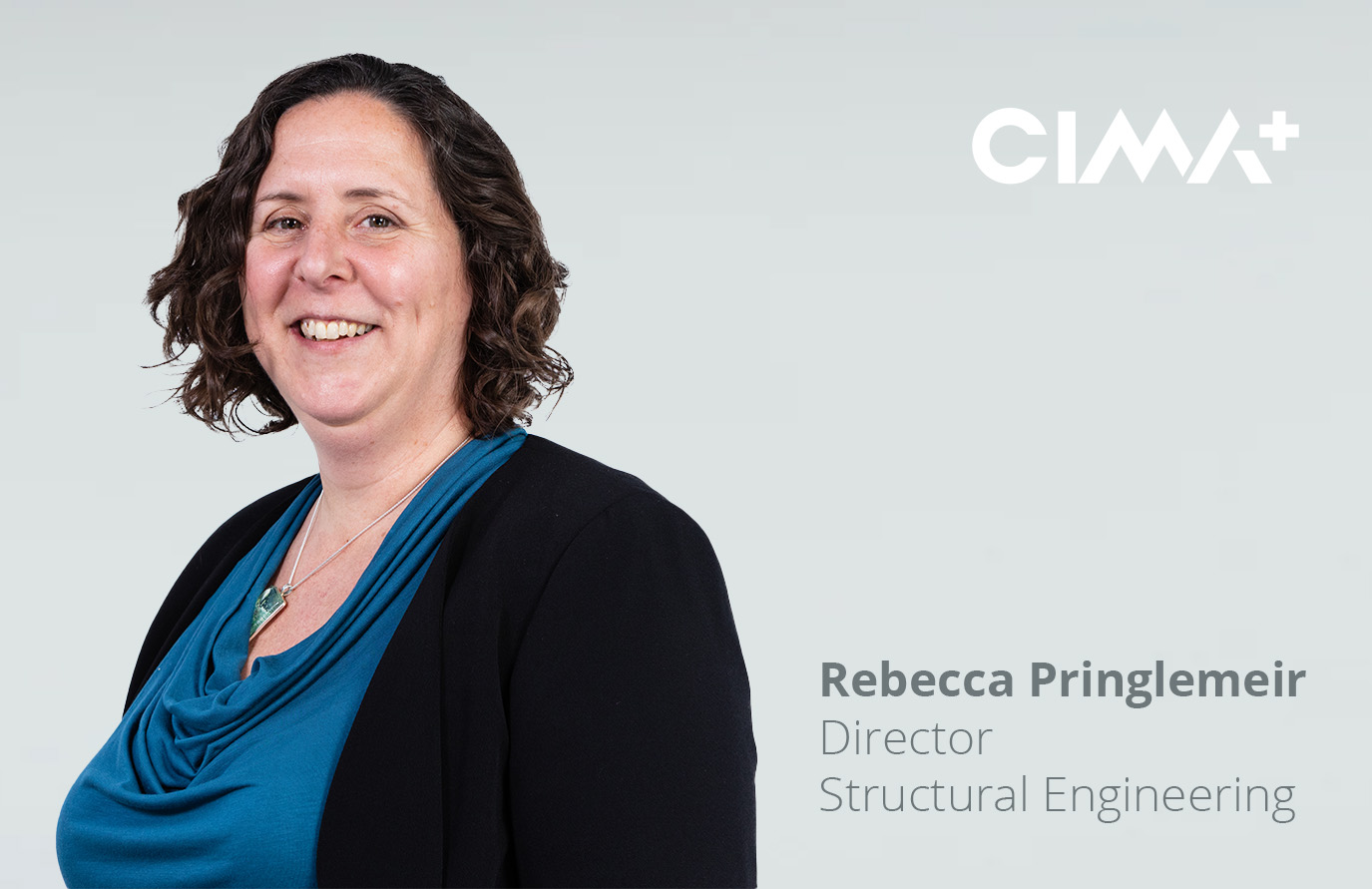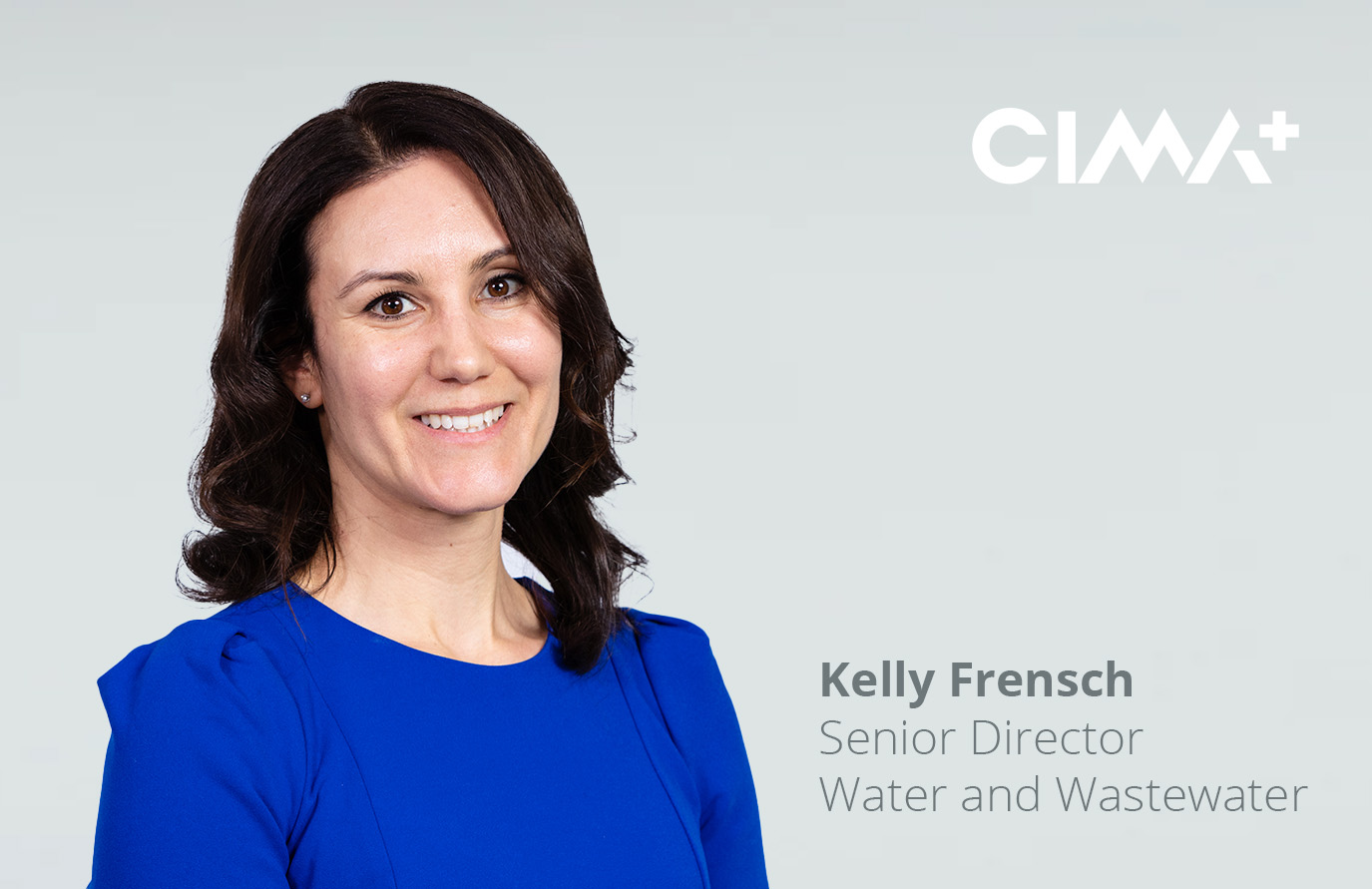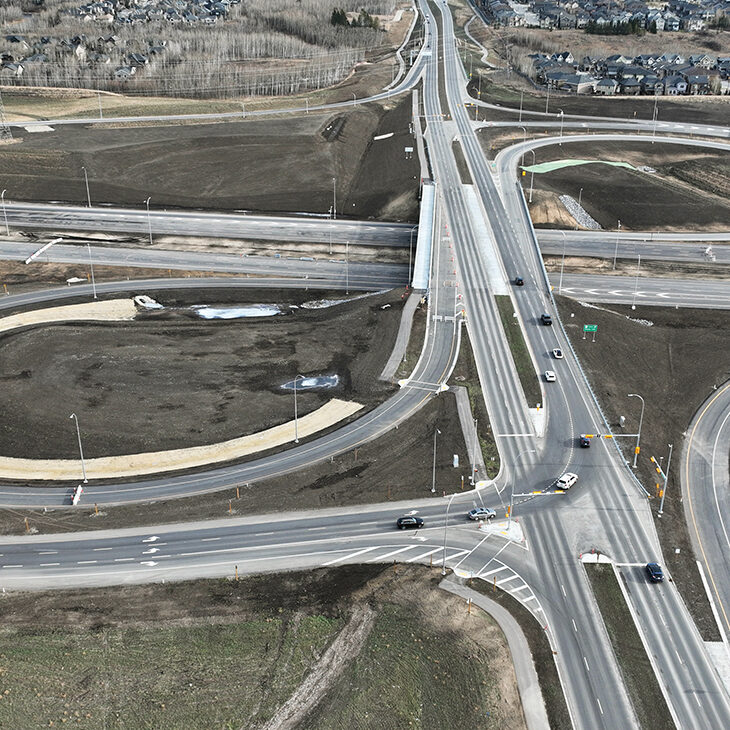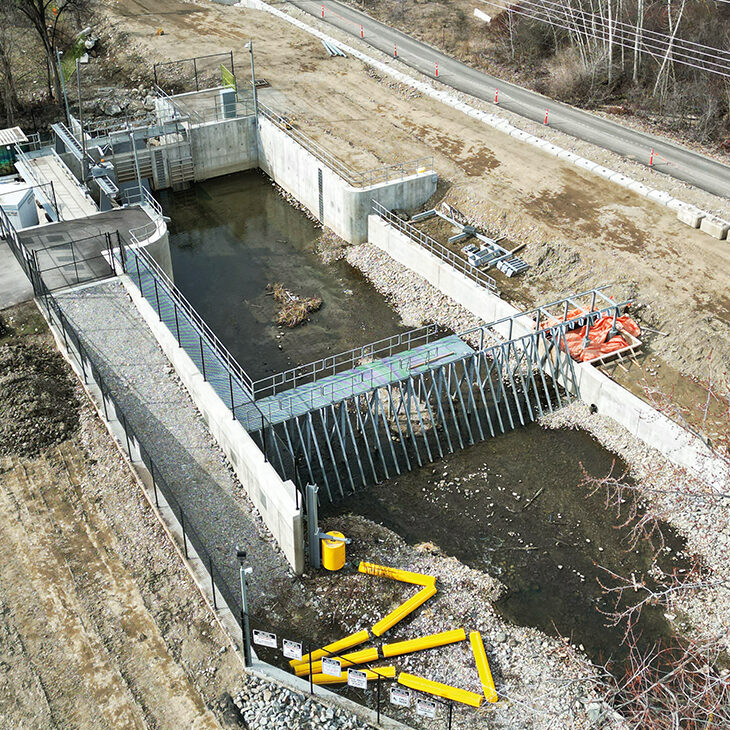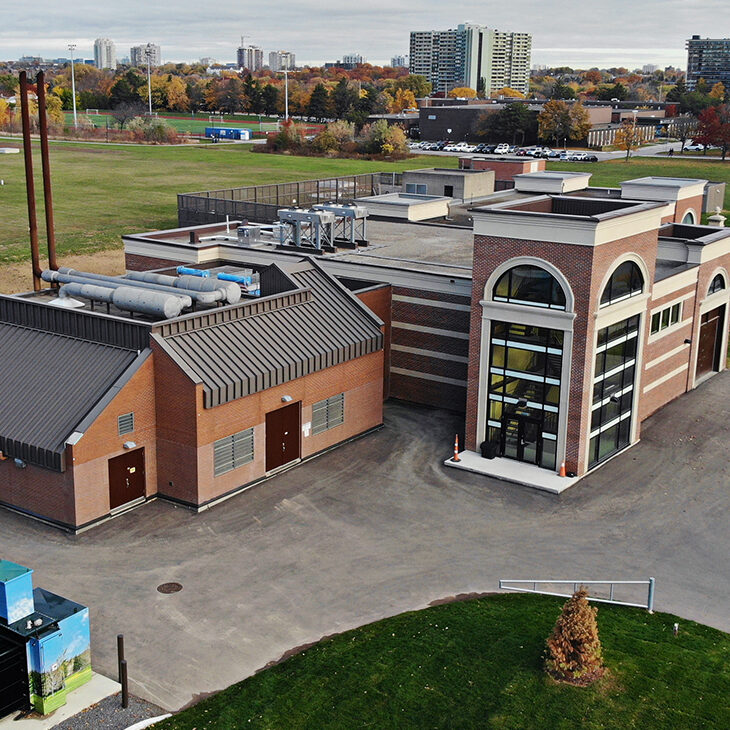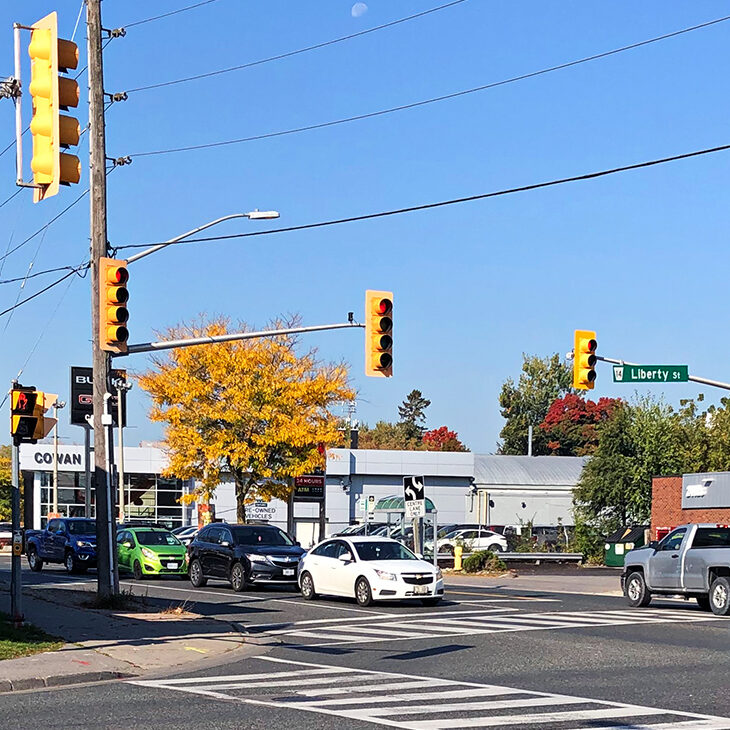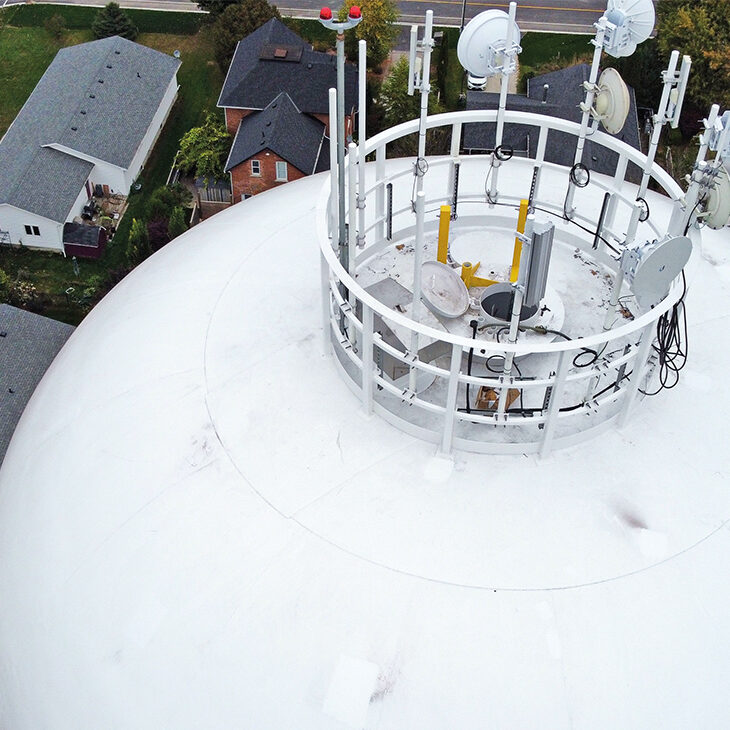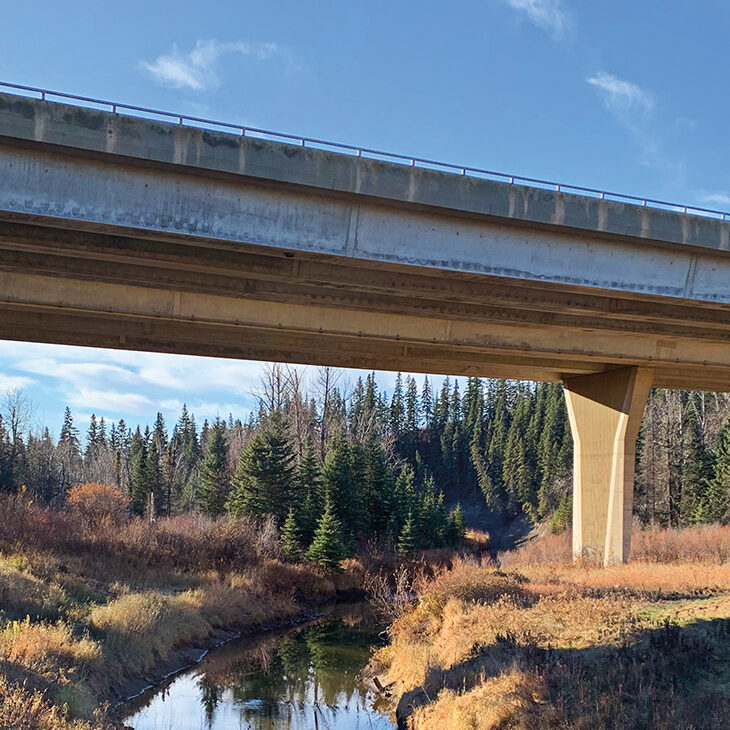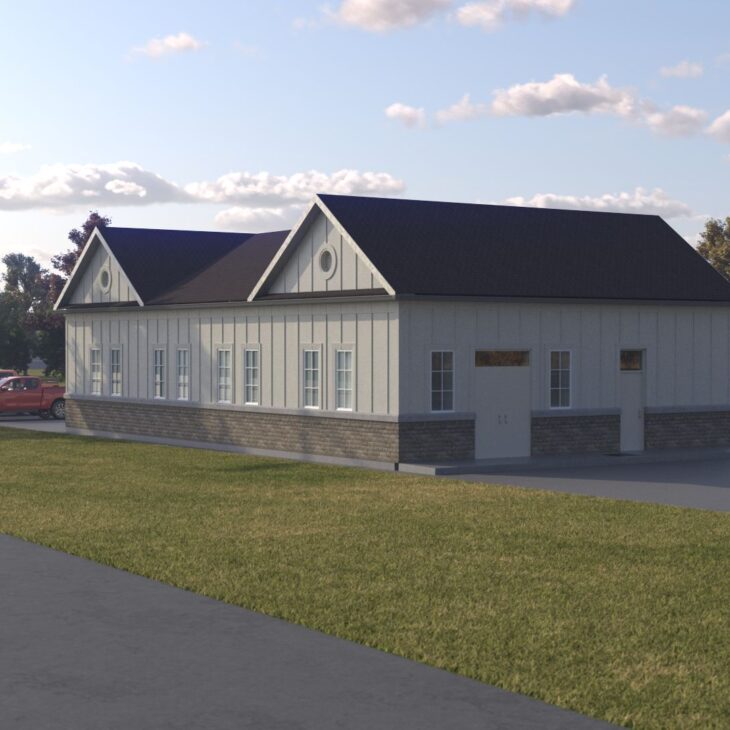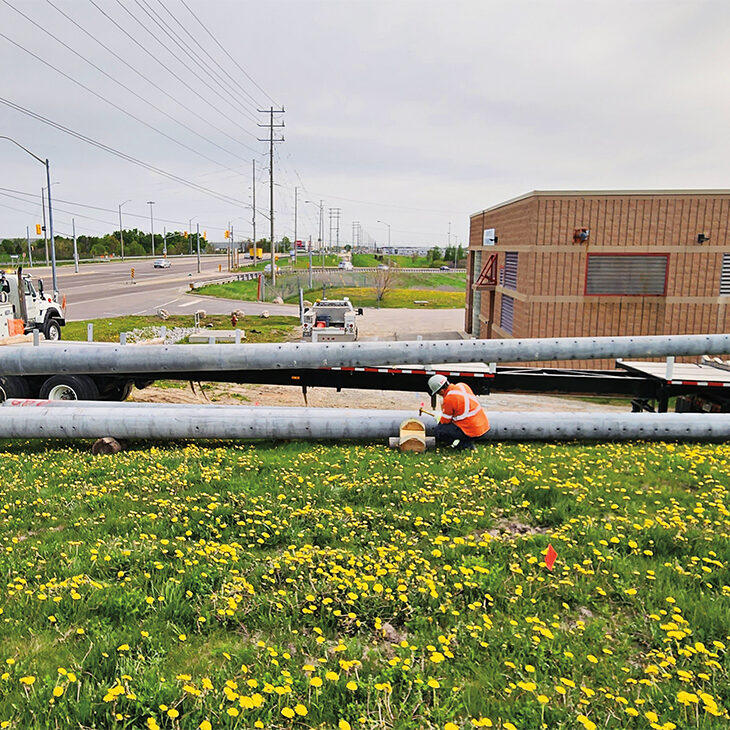We are thrilled to announce that CIMA+ will be bringing 18 speakers to this year’s joint OWWA / WEAO Conference. These experts represent a wealth of knowledge across various water-related domains.
Learn more about our speakers and the time and date of their respective presentations.
Sean Ma
Seasonal Coagulation Study Resulting in Optimized Plant Perform – Room #204
May 6th - 11:00 AM - 11:30 AM

Seasonal variations in temperature, pH and turbidity of Lake Ontario necessitate the optimization of the coagulation-flocculation process at the Woodward Ave. WTP during the summer months. Current practices result in occasional under or over-dosing of coagulant, which might affect treated water quality and cause unnecessary financial costs.
- The optimization focused on assessing the performance and removing limiting factors from four main areas:
- Coagulation/Flocculation Processes (dose, alternative coagulants and polymers)
- SCADA programming (relay and interaction responses to raw water variables)
- Mechanical/ Equipment (physical system dynamics, pump curves, chemical dosing)
- Operational Practices (maintenance, process control, floc evaluation, trending analysis)
In the present study, the coagulation performance for the removal of turbidity, Total Organic Carbon (TOC), and Ultraviolet Absorbance at 254 nm (UV254) was investigated using jar testing. Parameters monitored include pH, temperature, turbidity, free chlorine, UVT, TOC, Colour, Zeta Potential and Aluminum Residual. Optimization of the current plant conditions, coagulant doses and pH adjustment were investigated initially to determine the level of optimization that can be reached using the existing equipment and chemicals. The current coagulant dosing algorithm is solely based on raw water turbidity. Testing was continued and alternative coagulants and coagulant aids (polymers) were examined.
After analyzing final jar test results and optimizing process conditions and SCADA system, the current coagulant dosing algorithm will be updated to incorporate additional raw water quality parameters (in addition to turbidity) such as temperature, UV254, potentially Zeta potential and other key parameters identified by the study.
These findings informed recommendations for improving treatment efficiency and cost-effectiveness. Furthermore, the potential of machine learning to model and optimize coagulant dosage was explored, including evaluating different models for their simulation accuracy.
Preliminary observations highlights include a potential coagulant-dependent correlation between post chagulant injection Zeta potential and turbidity removal efficiency (Figure 1). Results demonstrated that the optimum dosage for reduction in turbidity and TOC is coagulant dependent. These findings highlight the potential utility of Zeta potential as an early indicator for coagulant performance monitoring in addition to temperature, UV254 and TOC.
Michelle Scott
Systematic and Optimal Pressure Monitoring for Water Distribution Networks – Room #205
May 6th - 11:00 AM - 11:30 AM

Water system pressure monitoring and pressure management are critical to providing safe drinking water, avoiding costly main breaks, reducing leaks and unaccounted-for (non-revenue) water, saving energy and system maintenance costs, addressing customer complaints, and avoiding water quality issues. However, there is insufficient information on the appropriate number, type, and placement of pressure monitoring devices for effective pressure monitoring of water distribution networks. Appropriate pressure monitoring device location and data collection frequency (sampling interval) depend on operational requirements and situations of interest.
Generally, pressure monitoring systems (PMS) for operational control are installed permanently, while PMS for addressing specific problems can be permanent and/or temporary. This paper discusses the industry practices and regulatory guidelines for water system pressure monitoring for operational control and selected situations of interest. It presents a spatial analysis and hydraulic modelling-based approach to determine the optimal number and location of pressure monitoring devices.
The proposed approach is demonstrated through a case study at the City of Guelph water distribution network, where permanent and temporary smart pressure monitoring devices are employed for operations and capital works. The information will be useful for municipalities and water utilities responsible for operating water systems of varying design, size, and complexity.
Bradley Young
Napanee WPCP – Evaluation and Design of the First AGS in Ontario – Room #207
May 6th - 11:30 AM - 12:00 PM
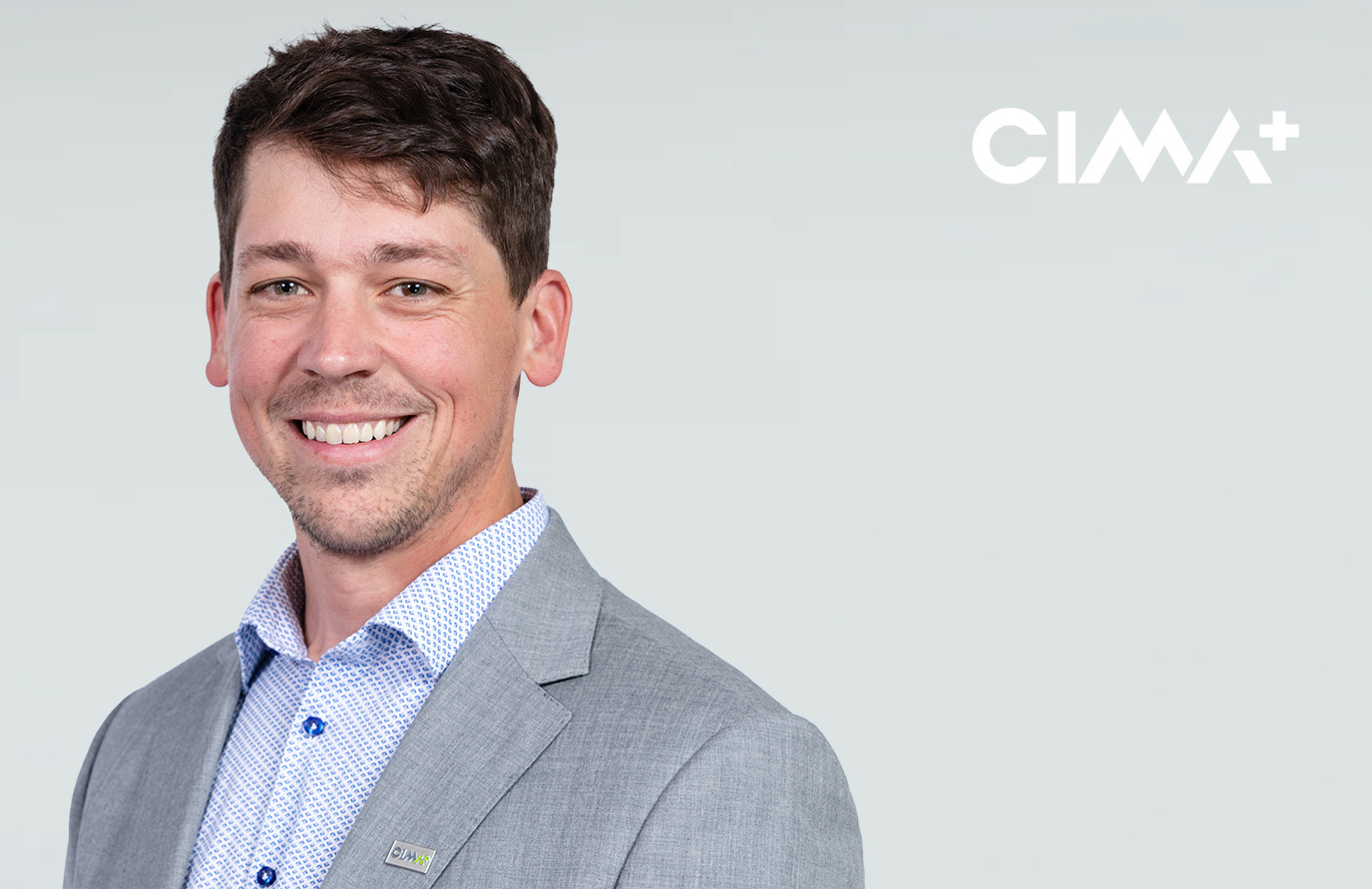
The Napanee WPCP is an aging conventional activated sludge plant that is approaching the plant rated capacity and requires an expansion to facilitate growth within the community. A Schedule C Class EA for the expansion was completed in 2011 and revisited in 2019 with a recommendation to construct new headworks and primary clarifiers on the Town owned land adjacent to the existing facility while expanding/modifying the existing secondary process to an IFAS process complete with tertiary filtration and UV disinfection.
The new plant is to treat to a rated capacity of 11,500 m3/d with stringent effluent objectives/limits (10/15 mg cBOD5/L, 10/15 mg TSS/L, 0.1/0.2 mg TP/L, 2/4 summer and 5/10 winter mg TAN/L).
At the start of detailed design in 2022, the project team investigated new processes that could be implemented completely on the Town owned property adjacent to the facility. The Nereda Aerobic Granular Sludge (AGS) process was identified as a high potential technology. The AGS technology is operated similar to a Sequencing Batch Reactor (SBR) and with self formed aerobic granules allowing for enhanced mixed liquor concentrations and fast settling. The process also does not require primary clarifiers and is preferential to deep tanks thereby significantly reducing the required site footprint.
The Nereda process was globally more established in the time span from the EA revisit in 2019 to the evaluation in 2022 (with several installations in the United States), however, there are currently no installations in Canada. This presentation will provide information on the new Napanee WPCP processes. Emphasis will be given to the Nereda technology, decision-making process to select the Nereda and the strategies used to mitigate risk with respect to implementing the innovative technology in Canada. This presentation will also provide information from the climate lens assessment which evaluated the relative difference in chemical, energy and overall carbon footprint associated with the project.
Gustavo Arvizu
Follow the Yellow Brick Road: The Path to Successful Digital Twin Implementation – Room #208
May 6th - 2:00 PM - 2:30 PM

The advancement of Artificial Intelligence, Machine Learning, Decision Support Tools, Real-Time Control, and Analytics makes it possible to solve some of the biggest challenges facing our Water and Wastewater Systems.
Applications of these can be integrated into a Digital Twin. But what is a Digital Twin? Based on our experience, the concept is not well understood. A Digital Twin is not SCADA, although SCADA may be an integral part of it. A Digital Twin is not a dashboard, although a Digital Twin may be made up of multiple dashboards. The Smart Water Networks Forum (SWAN) defines a digital twin as “a dynamic digital representation of real-world entities and their behaviors using models with static and dynamic data that enable insights and interactions to drive actionable and improved outcomes.”
Given the hype surrounding this topic, utility managers may be tempted to purchase software solutions that may not meet their needs. However, proper planning and preparation will go a long way in avoiding false starts and ensuring the solution implemented truly meets the utility's needs.
Reliable and trusted data is a key element to the implementation of a Digital Twin. This requires an understanding of the utility's system's sensors, network connectivity, storage, and data validation processes. It is also important to bring together the various stakeholders to understand the challenges in the system, data requirements, available infrastructure, system constraints, and the problems/challenges the Digital Twin solution is meant to solve. This involves getting stakeholder engagement and reaching a common understanding of the goals and challenges, determining what data sources, software solutions, databases, infrastructure, etc. you have now, and getting a picture of what is possible by understanding what others are doing. Digital Twin implementation is a journey that requires an iterative mindset to adjust to changing goals and priorities, system changes, and technological advancements. This paper will present the authors' perspective on the development of a Digital Twin Road Map to improve the chances of successful implementation.
Michael McKie
When Ozone Gets Out: Examining Best-Practices for Managing Ambient Ozone in Water Treatment Facilities – Room #203
May 6th - 3:30 PM - 4:00 PM
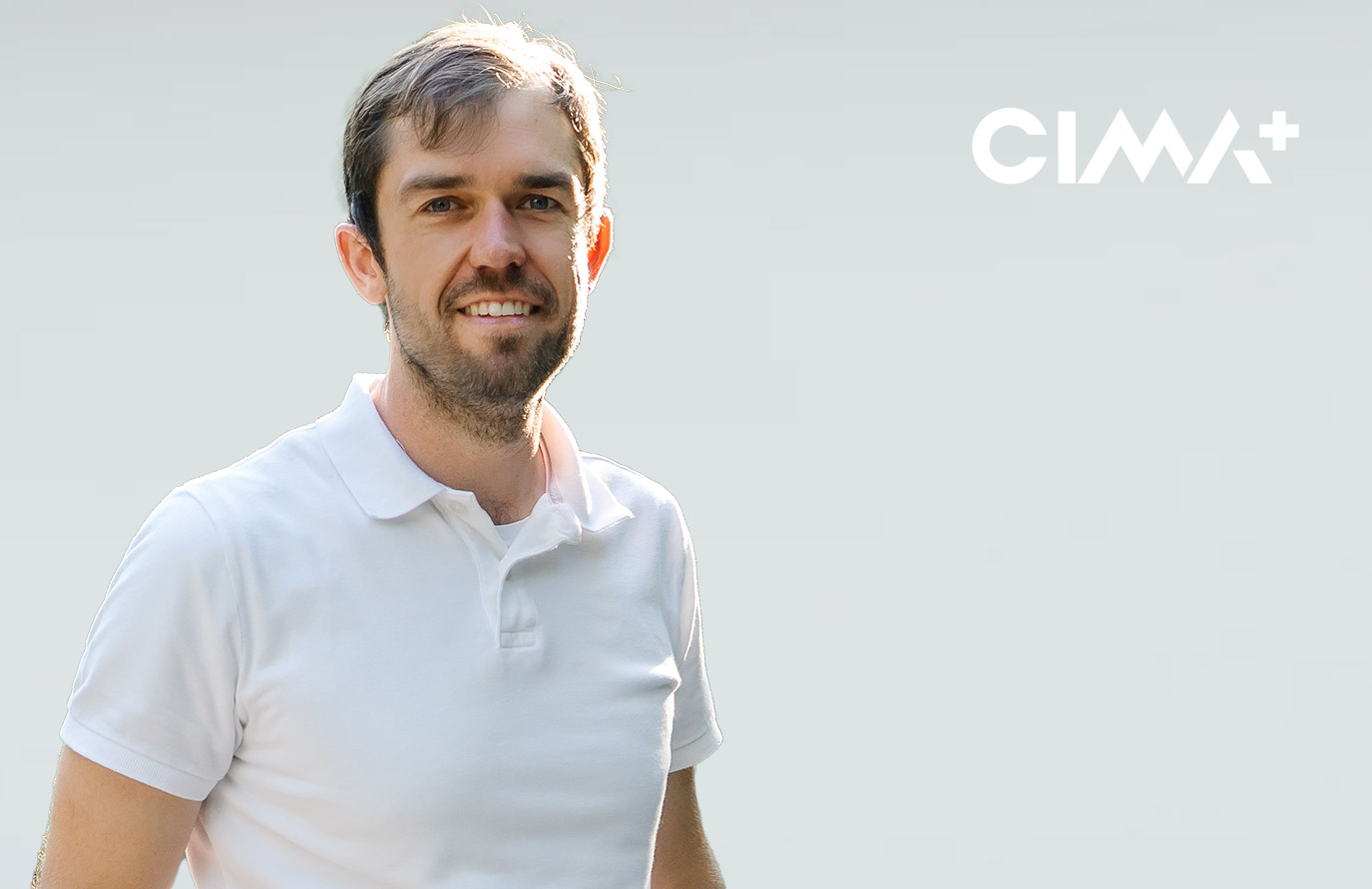
Ozone can be applied in drinking water treatment to achieve many objectives including disinfection, taste and odour control as well as contaminant oxidation. Although the benefits of ozone are well documented, ambient ozone (i.e. gaseous phase ozone) within water treatment facilities may pose a serious health and safety concern if elevated concentrations are present. Notably, health and safety regulations across North America limit the time-weighted average exposure concentrations of 0.1 ppm ozone over 8 hours and 0.3 ppm ozone over 15-minute periods.
These limits are well known through the ozone industry, and alarming throughout water treatment facilities is implemented to protect personnel.
Although the ozone exposure limits are appropriately considered throughout the industry, the approach to managing ambient ozone releases in water treatment environments varies between facilities. Based on experience from facilities in Ontario, Canada, this presentation will detail common events which may result in ozone gas releases, operational approaches to minimizing potential ozone off-gassing and HVAC requirements for managing ambient ozone throughout water treatment facilities. Particular attention will be paid to HVAC design, as a review of building codes and industry manuals did not identify any regulatory requirements for these systems. Instead a number of industry best practices related to system capacity, operation under normal and emergency operations as well as alarming were identified.
The objective of this presentation will be to give those currently operating or considering future installations of ozone systems an understanding of the potential risks associated with ambient ozone gas, detail common alarming approaches as well as detail a framework for evaluating ventilation system effectiveness and efficiency.
Caroline Alepin
Stress Testing a Fast-Growing Town WTP to Establish Actual Rated Capacity – Room #204
May 6th - 4:00 PM - 4:30 PM
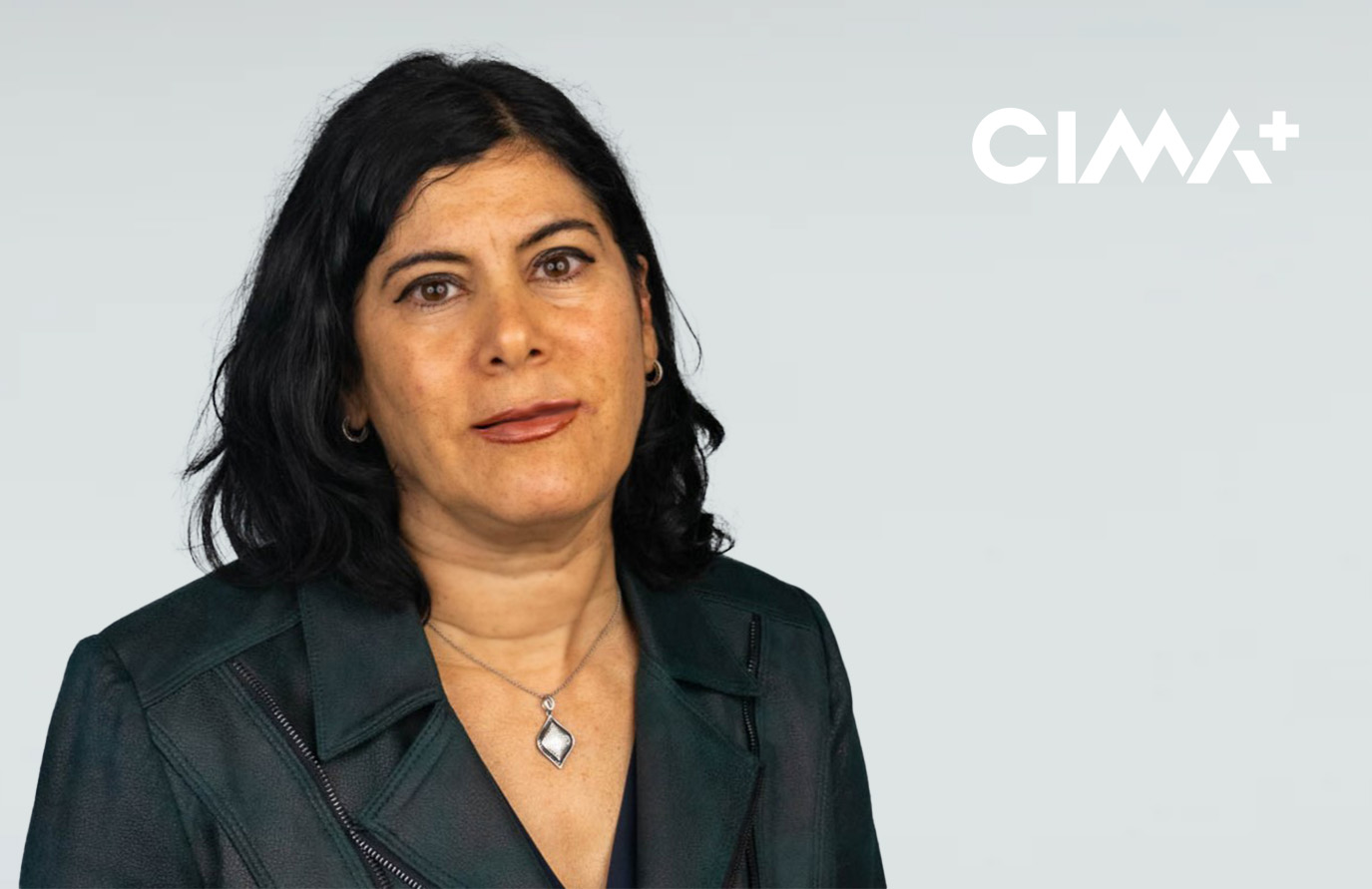
An aging water treatment plant (WTP), sourcing water near a harbour that experiences algal blooms, has been expanded from its original core structures dating back from 1928 to cater for growth. The plant remains one of very few plants in Ontario with buried flocculation and sedimentation tanks (Figure 1). Recent key residential developments in the Town have fuelled the need to expand further and determine its actual rated capacity.
This paper presents the methodology and results of a stress test/capacity assessment for the WTP of a Town experiencing accelerated development and facing system resilience deficiencies and potential water quality impacts due to climate change. The stress test, which took place in January 2023, determined the actual winter operating capacity of each treatment process unit and the overall plant.
The plant has been running at approximately 40% of its current rated capacity. The stress test protocol was developed in collaboration with the operating staff, identifying test scenarios, primary and secondary key performance indicators (KPIs; Figure 2) and a monitoring program. The results of the stress test were key in establishing the ability of the existing WTP to meet treatment objectives into the near future, in preparation for construction of a new water system planned for 2028-2029.
Based on the primary KPIs of filter run length, filtered water turbidity and headloss, and secondary KPIs (settled water turbidity, DOC, TOC, Colour, and Aluminum), the plant was evaluated with a winter operating capacity of approximately half the current rated capacity. Figures 3, 4 and 5 present trends observed for the three (3) scenarios tested at different filtered water turbidity KPIs. The trend in turbidity and headloss over filter run time was observed for all scenarios, with the lower tested capacity meeting the filter run length KPI. The plant capacity limitation, in light of the imminent upcoming growth, propelled the need to overcome process limitations causing higher disinfection byproducts (DBPS) at higher water demands. Means such as chloramination are currently being investigated to remediate to the high DBP issue.
Cristina Lugo
Chloramine NOT Bor-amine! Creation of a New Cam 1W Pressure Zone – Room #205
May 6th - 4:00 PM - 4:30 PM

Significant population and city growth have led municipalities to optimize and upgrade infrastructure within the distribution system to support increasing demand and maintain levels of service. Implementing changes within the distribution system can be challenging due to the direct impacts on customers, especially when sensitive areas are involved, such as hospitals and industrial facilities. In addition, modifications to the two most important parameters, pressure, and secondary disinfection residual, require proper staging to avoid customer complaints and water quality issues such as taste, color, and odor.
This paper will present lessons learned from a project in the Region of Waterloo, where a new booster pumping and chloramination station (BPCS) was constructed as part of an optimization plan for the City of Cambridge distribution system. The new station was built to create a new pressure zone (CAM 1W) and convert the secondary disinfection of the new zone to chloramines. Additionally, using chloramination in the area allowed for additional water supply from the two adjacent pressure zones in Kitchener, which currently use chloramination for secondary disinfection.
Through this case study, we will review the challenges involved in the construction and commissioning of the BPCS located on a main arterial road adjacent to a creek, a day care, and a hospital, and servicing an area with industrial facilities. For commissioning, developing a detailed staging plan was key to ensure hydraulic and chemical constraints were considered, and engage all required stakeholders with the plan. Pressure transition was completed through CAM 1W isolation and hydraulic gradeline increase by pressure boosting and chloramine transition was achieved through initial saturation of ammonia at the source point, monochloramine stabilization, and setting the final Chlorine to Nitrogen ratio. This staging process ensured stable pressures and chloramine residuals with adequate formation of monochloramines and reduced formation of dichloramines and trichloramines. This project is an example of an upgrade to the distribution system while minimizing impact to customers through proper staging procedures, and construction and commissioning were completed with successful results.
Matt Philipps
Two Sources Are Better than One: Redundancy for the Union and Windsor
Water Systems – Room #205
May 6th – 4:30 PM - 5:00 PM
The Union Water Supply System (UWSS) and the Windsor Utilities Commission (WUC) are adjacent water supply systems located in south western Ontario, each of which operate independently and have singular supply points. A study was completed to assess the two water systems to test various interconnection strategies between UWSS and WUC for the purposes of providing redundancy to both systems and improving security of supply. By having interconnectivity, one system could supply the other in the event of a planned or emergency shutdown. A water model was developed that combined both water systems. A number of potential redundancy alternatives were developed and analyzed using the combined water model.
Starting with a desktop analysis, a number of opportunities and constraints were identified. Existing system conditions were considered to develop a long list of alternatives, including:
- Do Nothing
- Watermain connection at border of the two distribution systems
- Connection between UWSS pump station (PS) and WUC distribution system
- Connection between WUC PS and UWSS distribution system
- Connection between UWSS PS and WUC PS
- New Central Reservoir and PS with connections to both systems
- Raw water connection between the two WTPs
- Additional local storage (no connections between systems)
Based on the feasibility of each long-list alternative, a short list of alternatives was developed and assessed using hydraulic modelling and conceptual cost estimates were completed. Ultimately, the preferred solution was a new Central Reservoir and PS with connections to both systems.
With the preferred alternative identified based on system hydraulics, an assessment of distribution system water quality was completed for the combined system. Due to the large geographic area covered by the system, high water age is anticipated. A review of the existing water quality information from both systems was completed to estimate chlorine decay as well as to characterize potential corrosion concerns. Finally, localized impacts to the distribution system were considered based on new entry points which were modelled. Overall, water quality impacts were anticipated to be manageable with an emphasis on public outreach in advance of the transition and operation of the emergency system.
Conceptual design for the proposed alternative is expected to begin in 2023.
Daozhong Yu
Going Beyond the Staging Plan – Continuing the Tale of the Paisley Pumping Station Upgrades – Room #206
May 6th - 4:30 PM - 5:00 PM

The Union Water Supply System (UWSS) and the Windsor Utilities Commission (WUC) are adjacent water supply systems located in south western Ontario, each of which operate independently and have singular supply points. A study was completed to assess the two water systems to test various interconnection strategies between UWSS and WUC for the purposes of providing redundancy to both systems and improving security of supply. By having interconnectivity, one system could supply the other in the event of a planned or emergency shutdown. A water model was developed that combined both water systems. A number of potential redundancy alternatives were developed and analyzed using the combined water model.
Starting with a desktop analysis, a number of opportunities and constraints were identified. Existing system conditions were considered to develop a long list of alternatives, including:
- Do Nothing
- Watermain connection at border of the two distribution systems
- Connection between UWSS pump station (PS) and WUC distribution system
- Connection between WUC PS and UWSS distribution system
- Connection between UWSS PS and WUC PS
- New Central Reservoir and PS with connections to both systems
- Raw water connection between the two WTPs
- Additional local storage (no connections between systems)
Based on the feasibility of each long-list alternative, a short list of alternatives was developed and assessed using hydraulic modelling and conceptual cost estimates were completed. Ultimately, the preferred solution was a new Central Reservoir and PS with connections to both systems.
With the preferred alternative identified based on system hydraulics, an assessment of distribution system water quality was completed for the combined system. Due to the large geographic area covered by the system, high water age is anticipated. A review of the existing water quality information from both systems was completed to estimate chlorine decay as well as to characterize potential corrosion concerns. Finally, localized impacts to the distribution system were considered based on new entry points which were modelled. Overall, water quality impacts were anticipated to be manageable with an emphasis on public outreach in advance of the transition and operation of the emergency system.
Conceptual design for the proposed alternative is expected to begin in 2023.
Wilcon Ching
NBC 2020, Effects on Facility Layout – Room #206
May 7th - 8:30 AM - 9:00 AM

Post disaster buildings are to survive disasters intact and functional. Post-disaster buildings are necessary for the provision of essential services to the public in the event of a disaster and includes: water treatment facilities, water storage facilities, water and sewage pumping stations, sewage treatment facilities.
NBC 2020 includes new information on post disaster seismic design of our structures. Designs will need to respect this code starting early 2024. This is an emerging issue that will effect the overall facility layout, design costs, and construction costs of our post disaster facilities.
Post disaster buildings are to carry larger wind loads, snow loads, and to survive larger deflections in the event of an earthquake. The effect of earthquake loads and deflections on a building’s ability to resist or accommodate environmental loads are generally only taken into account in the design of post-disaster buildings. For all other buildings, damage to building components during seismic events is anticipated and these buildings are not intended to be functional after the event. Post-disaster buildings, however, have to account in the design for environmental separation, as these buildings are required to continue to function after the design event.
The NBC restricts post disaster facilities from having the following irregularities:
- Vertical Stiffness Irregularity
- Vertical Geometric
- In-Plane Discontinuity
- Out-of-Plane Offsets Discontinuities
- Torsional Sensitivity
- Gravity-Induced Lateral Demand Irregularity
- Sloped Column Irregularity
The effect of this restriction pushes our facilities to be more solid rectangular structures limiting the architectural expression, but also making it difficult to customize buildings around our equipment, and tanks. In this presentation we will explain the coming change and give examples of standard building layouts that will need adjustment.
Emily Snoei
Leveraging Industry Resources for Efficient, Holistic Assessment of Sustainability and Climate Change – Room #224
May 7th - 8:30 AM - 9:00 AM

As the impacts of climate change become more evident with each passing season; mitigation, adaptation, and resilience are increasingly critical considerations for infrastructure design projects. Considering current climate projections and government commitments to take action, the need for sustainable infrastructure will only become more prominent. However, some of the barriers to sustainability-focused designs are the perceived impacts to the project budget and schedule, or simply not knowing where to start. Industry resources that are already available can provide a significant head start to decision-making during conceptual and detailed design. This paper discusses how to leverage available industry resources to efficiently, holistically assess and improve the sustainability of an infrastructure design, with focus on a case study of the Elmira WWTP in the Region of Waterloo.
The Elmira WWTP was constructed in 1965 and is rated for an average day flow of 7,800 m3/d and peak flow capacity of 19,500 m3/d. CIMA+ was retained by the Region to complete a holistic Facility Plan and detailed Conceptual Design for all unit treatment processes to address operational challenges, aging assets, improve resiliency, and develop a prioritized implementation plan detailing future upgrades. Resulting recommendations include a new combined Tertiary / Wet Weather Treatment Facility, new secondary clarifier, and beneficial re-use of biosolids.
This paper presents a new approach to sustainability, in which a combination of industry tools such as certification frameworks, greenhouse gas (GHG) calculators, and funding programs were used to evaluate the sustainability of these upgrades. The review identified the key strengths of this conceptual design, including the strategic re-purposing of existing infrastructure and mitigation of GHG emissions (-208 tonnes CO2 eq/year). The review also highlighted opportunities for improvement in the future project phases, to be considered by the Region. This paper provides insight into the benefits of using existing tools to assess sustainability, such as the high efficiency, easy repeatability, and holistic quality of this approach, which looks beyond the GHG metrics. This paper also identifies lessons learned to improve this approach for future projects and emphasizes why documenting the sustainability of infrastructure projects is worthwhile for all clients.
Richard Chen
Ammonia Removal Process Optimization using Hydraulic Calculation and CFD Modelling at Waterloo WWTP – Room #201
May 7th - 9:30 AM - 10:00 AM

The Waterloo WWTP is a three-pass plug flow conventional activated sludge plant with parallel bioreactors and four secondary clarifiers. The facility includes two re-aeration tanks (RATs) to pre-treat the anaerobic digester dewatering centrate in a partial side-stream application prior to entering the mainstream. The centrate from dewatered anaerobically digested sludge typically accounts for 1-2% of the plant flow and can contribute 10 to 30% of the ammonia load to the bioreactors. The centrate is rich in ammonia and unbalanced with respect to alkalinity. The biological oxidation of ammonia to nitrite consumes alkalinity at 7.14 gCaCO3/gN. Additionally, the nitrifying microorganisms are autotrophic and use bicarbonate as a food source to maintain their activity. In this scenario, the RATs provide the volume required but are missing the vital constituent (alkalinity) for complete performance, where the re-aeration process is limited by the pH and alkalinity available in the return activated sludge. CIMA+ identified that the re-aeration process requires primary effluent (PE) to combine with RAS and centrate in the re-aeration inlet channel to provide alkalinity for the partial sidestream nitrification process.
The flow split of primary effluent needs to be managed to provide sufficient alkalinity while maintaining a reasonable hydraulic retention time. The existing infrastructure results in the PE preferentially flowing to the first pass of aeration and bypassing the re-aeration cell, further, the RAS pipe is creating a hydraulic wall and not allowing PE flow to enter the re-aeration channel.
CIMA+ was retained by the Region of Waterloo to improve the partial sidestream treatment process which has been achieved through the following:
- Modification of the existing RAS and centrate pipes to direct the flow into the RATs and eliminate the hydraulic wall effect;
- Addition of two modulating weir gates to optimize primary effluent flow to the re-aeration tanks for improved process stability and optimization of nitrification in the re-aeration tanks;
- Re-establish hydraulic profiles in the upstream of aeration tanks Computational fluid dynamics (CFD) modelling was used to verify the design approach and hydraulic profile calculations under varies flow conditions.
Detailed design approaches and modelling results will be discussed in the presentation.
Othar Velasquez
Planning for Quality, Tank Repair – Room #221
May 7th - 2:00 PM - 2:30 PM

An engineer’s role is to provide a constructible, quality, cost effective design that meets the needs of the owner. When planning for quality, it should also include planning for typical unknowns, plan to mitigate construction risks, and plan for quality of the built item. We can provide the tools to be agile in the construction phase and be there to help make decisions throughout the process.
This presentation will be limited to 4 things as they pertain to reservoir rehabilitation projects; design process or phases, condition assessments, writing contracts for rehab design and risk management, and finally the quality systems.
Graham Seggewiss
Commissioning and Performance Testing of Fujiwara Type Primary Clarifier – Room #201
May 7th - 2:30 PM - 3:00 PM

The Kitchener Wastewater Treatment Plant (WWTP) is a conventional activated sludge (CAS) treatment facility owned by the Region of Waterloo (Region) and operated by the Ontario Clean Water Agency (OCWA). The facility is operated under the Environmental Compliance Approval (ECA) No. 1322-9YPGJK issued August 2015.
An ongoing construction project at the plant is focused on upgrades to the primary clarifiers, including installation of new clarifier mechanisms, and sludge and scum pumps. The technology selected for installation at the Kitchener WWTP was the Fujiwara mono-rail style clarifier mechanism, an emerging clarifier technology with limited installations and experience in the Ontario market. This presentation is focused on sharing experiences and lessons learned during the design, construction, commissioning stages of the project.
Pre-selection and Detailed Design
The Fujiwara mechanism was selected through a detailed review and evaluation process. A key component of the pre-selection and shop-drawing review process was identifying all retrofits required for installation of the new Fujiwara mechanisms within existing tanks. This presentation will review in detail the main modifications that were required, including: installation of pass divider walls, control of scum collection and wasting processes, and construction of a platform for installation of actuators and gear drives.
Construction, Commissioning, and Testing
The presentation will review decisions made during construction to facilitate the installation process, including modifications within the tank to accommodate mechanism installation, and timing and frequency of inspections to ensure proper progression.
Testing and commissioning are critical components of any equipment installation. For this project, commissioning testing was defined as a 14-day performance run period during which the following parameters were monitored and measured:
- Sludge blanket levels
- Clarifier hydraulic loading
- Primary influent and effluent characteristics
- Primary sludge characteristics and pumped volume
The performance plan was created and coordinated by the equipment vendor, with all results summarized in a performance report. This presentation will review results of the performance testing and share lessons learned for future projects.
Kathleen Farrow
A Small Northern Ontario Town and Its Journey from Groundwater to Surface Water – Room #222
May 7th - 2:30 PM - 3:00 PM
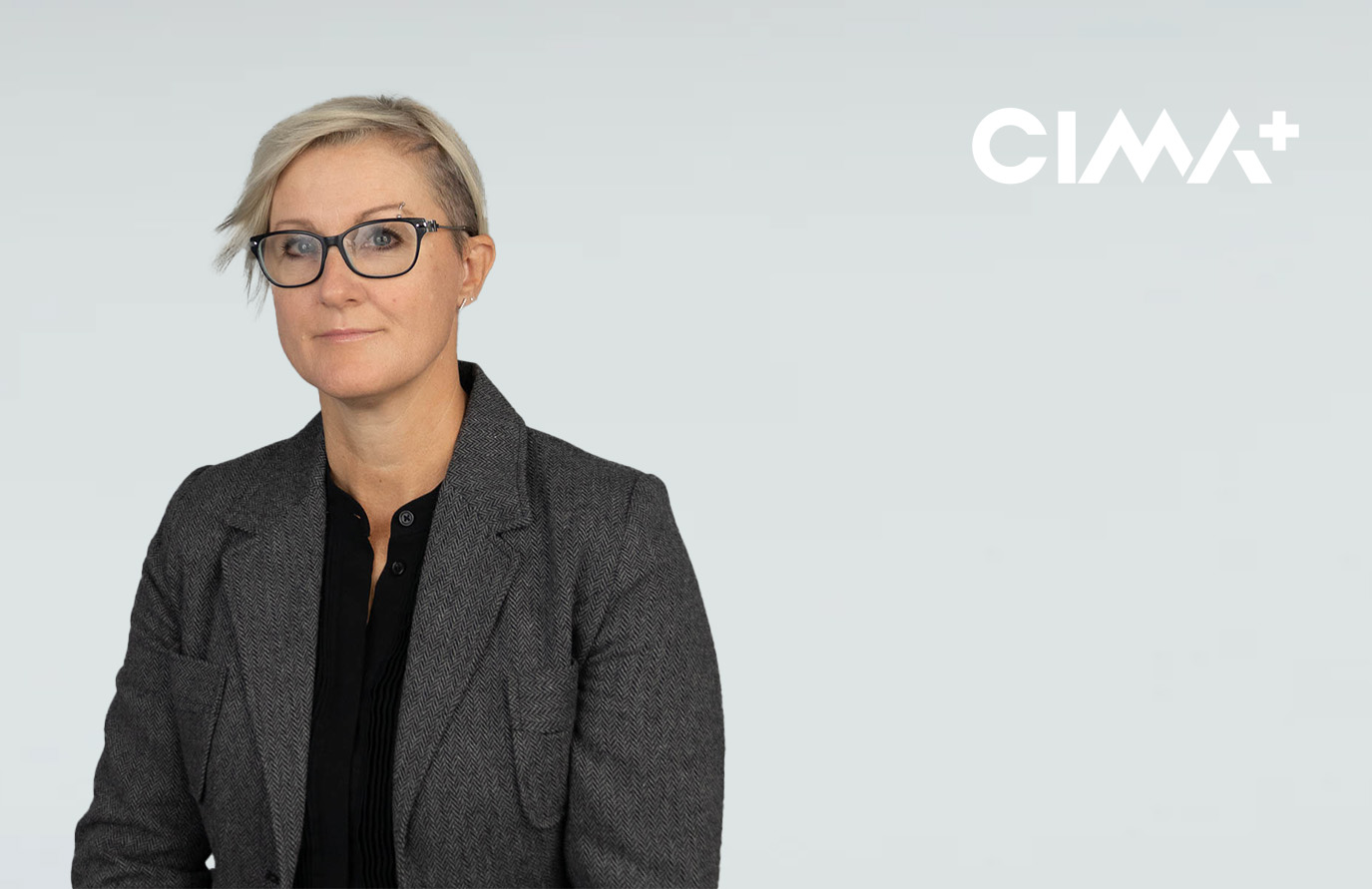
This presentation takes us through the processes required for a small northern Ontario community, to change their municipal drinking water system’s (DWS) water source from that of old, unsustainable GUDI wells to a new surface water intake. From conception to design, beginning by evaluating all possibilities, consulting with the public and working closely with stakeholders, summarizing the steps required to bring the dream of a new, more reliable raw water source, to the community.
Many challenges were met and overcome while selecting the location for the new intake and pumping station, due to the shallow topography of the lake and proximity to surrounding industrial and domestic wastewater outfalls, Indigenous lands and year-round lake and shoreline activity. At an elevation of over 20m above the lake level, bringing the water to the existing treatment facility brewed more environmental and social considerations. Even after the town received some funding from the government, the biggest challenge was to meet the requirements for planning, design and permitting, while being restricted to a limited budget, and leaving reserves for the town to invest in the construction phase. As Northern communities face harsh winters and short summers, lake recreation, fishing, hunting and the preservation of the surrounding natural environment are held in very high regard. Considerations were made to limit the impact to the community, both financially and with regard to their way of living. A field analysis and water sampling plan was carefully developed and carried out, working hand in hand with the MECP, to ensure that sufficient data was acquired to affirm the new water source is of good quality and that the existing water treatment system will be sufficient to produce safe, reliable drinking water that will meet regulatory requirements and climate change resiliency objectives. This, and several other studies and steps completed will result with construction beginning in 2024.
Chris Sweetingham
Weathering the Storm: Protective Coating Systems in Canadian Environments – Room #221
May 7th - 2:30 PM - 3:00 PM

Aging infrastructure poses challenges to municipalities and operating authorities to maintain a reliable system with a low risk of failure. Corrosion of infrastructure can result in accelerated deterioration and premature failure, resulting in costly repairs or replacements. Municipal coatings projects of all sizes can experience significant challenges in performing in-situ applications of coatings, especially given the variable nature of Ontario’s climate. Coating systems often serve as the first line of defense for infrastructure exposed to the elements and service environments, and effectively maintaining a system’s assets allows owners to focus on planned projects rather than emergency work.
This presentation will demonstrate how to achieve successful protective coating system outcomes through lessons learned and industry best practices in Ontario. Condition assessments are critical in defining if existing coatings require removal or if they are candidates for overcoats. The presentation will review how to reduce risks during surface preparation and coating application, such as using engineered controls like containment systems, heaters, and de-humidification. Scheduling and planning considerations will also be detailed, to avoid the risk of performing works in challenging weather conditions which can negatively impact coatings quality and introduce additional cost.
The presentation will review common challenges experienced during coatings applications for water infrastructure projects, including correctly specifying protective coating systems for specific applications, and preparing documentation to ensure contractors plan their work in detail. Each stage of a typical coatings application procedure will be discussed to provide attendees with a greater understanding of the steps which must be performed. Using the lessons learned and industry best practices, maximum performance lifespan of the coating systems can be achieved to protect systems assets for many years to come.
Sabrina Chang
Haldimand-Norfolk Water Connection – Room #207
May 7th - 2:30 PM - 3:00 PM

Haldimand County (Haldimand) requested the services of C3 Water Inc. to perform an assessment of the impacts of future supply connections to Norfolk County (Norfolk) on the existing Haldimand infrastructure. The future connections to Norfolk were broken into three (3) phases, with increasing supply of 10 ML/d, 25 ML/d and 40 ML/d. The proposed connections have a significant impact to the Nanticoke water supply system and linear infrastructure within Haldimand. This assignment provided Haldimand with an understanding of the impacts on the Haldimand system and infrastructure, and how to manage required upgrades with Norfolk.
Haldimand’s InfoWater Pro model was updated to include the phased Norfolk connections, as well as known growth projections for Haldimand County. Results from the model were used to calculate the utilization of existing infrastructure with Haldimand growth alone and with the addition of the Norfolk supply connections. A desktop analysis of the modelled flows through critical infrastructure allowed for a detailed breakdown of the utilization of existing watermain capacity. Assessment results were presented to identify which infrastructure upgrades were a result of the additional Norfolk supply connections.
The InfoWater Pro water tracing feature was also utilized to assess how much of the existing Haldimand storage was being utilized by the Norfolk connections. This tool allowed Haldimand to determine if water was being supplied from elevated storage or the Nanticoke water treatment facility. These results were presented to Haldimand to support future rehabilitation of vertical infrastructure and its importance to both Haldimand and Norfolk.
The project resulted in a detailed breakdown of infrastructure for all supply phases, including details such as watermain capacity, velocities, headlosses, and source of water storage.
Ryan Steckly
Hindsight is 2022 – A Look Back at the History of GAC Contactor No.2 – Room #222
May 7th - 3:00 PM - 3:30 PM
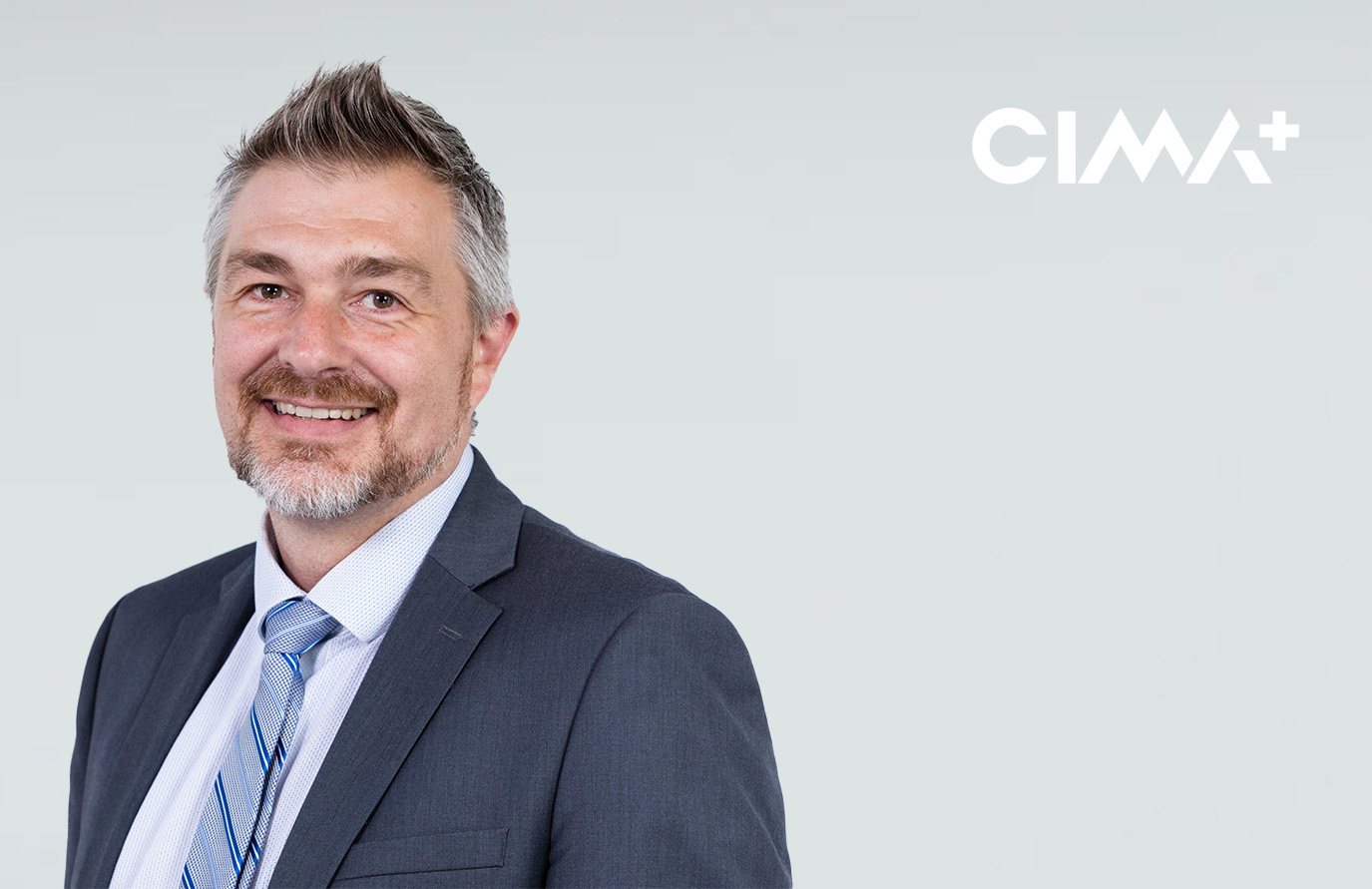
The Greenbrook Water Treatment Plant, Kitchener, ON was upgraded in 2009 to include a UV/peroxide advanced oxidation process (UVAOP) for addressing concentrations of 1,4-dioxane in the source water. The system was designed with up-flow GAC contactors to quench the peroxide residual downstream of the UV system. Over the history of operation of the GAC system, performance issues were identified which impacted the chlorine dosing system and the fine particulate filters downstream of the GAC system. At the time of the design, the replacement of the GAC media was expected to be on the order of 6 months to 1 year, however a much longer lifespan was realized following the commissioning of the system.
2022 experienced the first media replacement for GAC contactor No. 2. Speaking with the original media supplier regarding the replacement media, it was realized that the backwash expansion curves for the new media were different than used for the original equipment design. With the new information, it was found that more expansion of the media exists than previously intended which could lead to blow-out of the media under higher flow rates. With the media removed, a visual flow test was completed so the laterals could be observed. With the water flowing, it was found that the flow out of the lower laterals was non-uniform and upon removal of the laterals, it was found that the laterals were incorrectly oriented at the time of construction. This non-uniform flow was also suspected of causing additional media blow-out over the history of operation of this GAC contactor. Upon start-up of the contactor with the new media, GAC fines are being continuously evolved from the media and caught on the fines filters downstream. Trends show the fines are slowly declining and enforce the need for filtration following the up-flow GAC process. Design considerations, updated media specifications, and construction related issues will be presented.
Contact our team!
CIMA+: a one-stop solution for all your engineering needs
We take pride in our multidisciplinary approach. By offering everything under one roof, you benefit from a simplified collaborative approach to deliver projects quickly and on time.
Discover our infrastructure projects
Our teams have successfully completed hundreds of large-scale engineering projects.
Reconstruction of Downtown Lindsay
The City of Kawartha Lakes undertook the revitalization of the historic downtown of Lindsay with the goal of renewing the core of the community for residents, businesses and tourists....
West Calgary Ring Road – Highway 8 to Old Banff Coach Road
On December 19, 2023, after decades of consultation, planning and construction, the West Calgary Ring Road from Highway 8 in the south to Old Banff Coach Road opened, completing...
Mill Creek Flood Protection
However, modelling done in 2020 showed that the 200-year peak flood had increased from 12 m3/s to 24.3 m3/s due to climate change, thus indicating that the structure was...
Modernization of the Herridge and Silverthorn Pumping Stations
Peel Region’s Water and Wastewater Master Plan identifies expansions and upgrades required in the South Peel water supply and storage system through to 2031. Future intensification is a key...
Assessment of Potential Regional Water Systems
By serving more users from each treatment system, these regional systems would provide the benefit of reducing capital costs. Additionally, they can reduce the operational and maintenance burden on...
Reconstruction of Liberty Street South from Baseline Road to King Street East
Liberty Street is one of three major north-south roads that serve the community of Bowmanville. It provides critical access to residential areas to the east and west and to...
Rehabilitation of the Victoria Street Elevated Water Tank
Elevated water tanks are common sights in many communities across Canada and are integral parts of municipal water distribution systems. They provide water supply equalization as well as emergency...
Terwillegar Drive Stage 2 project
The City of Edmonton retained CIMA+, along with Associated Engineering as a sub consultant, for the design development and construction of the Terwillegar Drive Stage 2 project. A priority ladder...
Expansion of Water and Wastewater Servicing in North and West Bolton
Peel Region, the regional municipality to the west of Toronto that contains the local municipalities of Brampton, Mississauga and Caledon, is one of the fastest-growing areas in Canada. Its...
Upgrade of the Electrical System at the North Brampton Pumping Station
The North Brampton reservoir and pumping station supply drinking water to pressure zones 6 and 7 of the Region’s water distribution system. The zones contain established residential and commercial...
